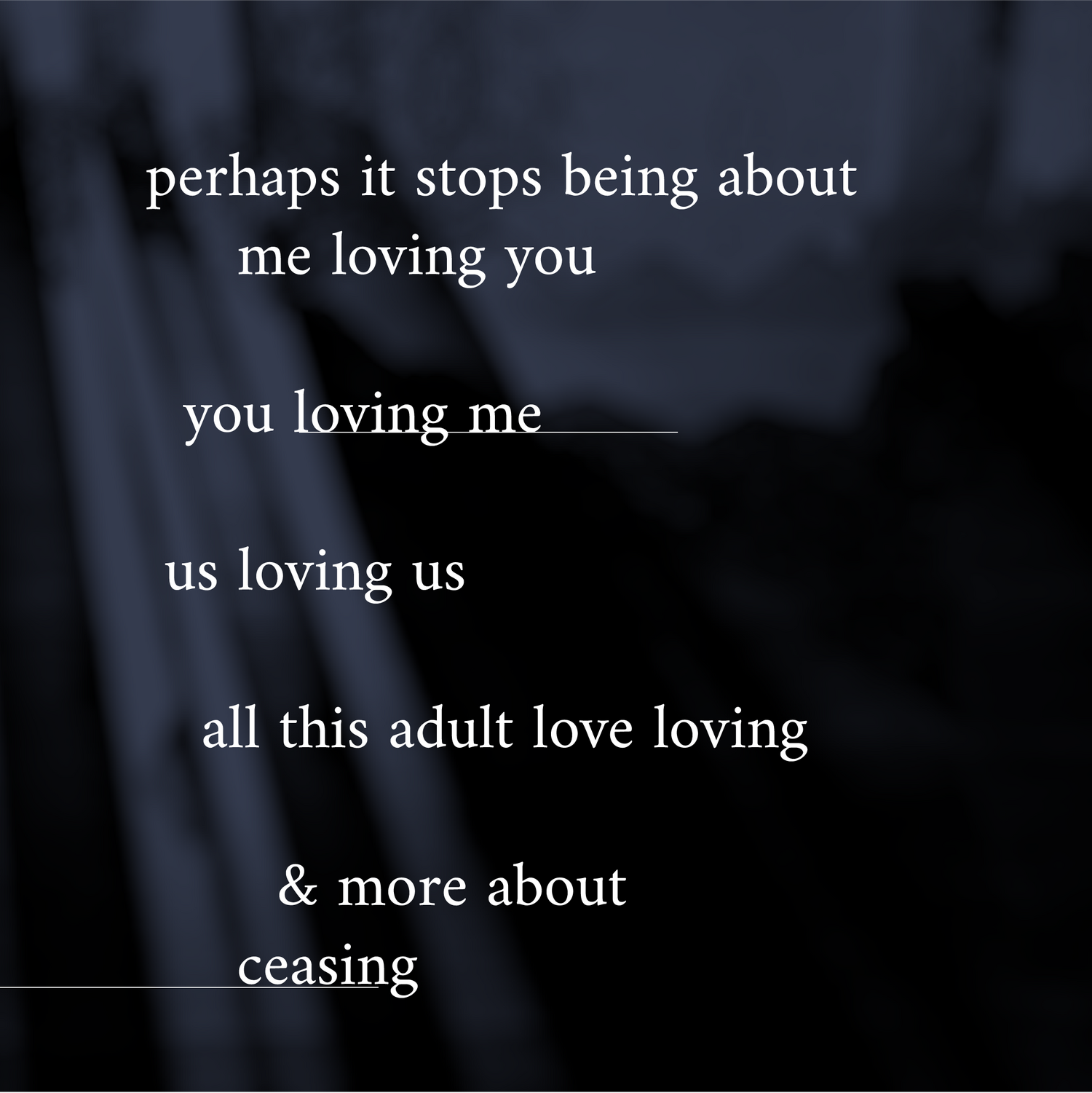Being Borges
I do not know which of us has written this page.
– Jorge Luis Borges
Being Borges proposes a new form of literary translation to beg the question: What’s at stake when language becomes literal via the visual?
Being Borges is an ongoing series of 12 total Beings, inspired by “The Book of Imaginary Beings”
All Beings release on Verse
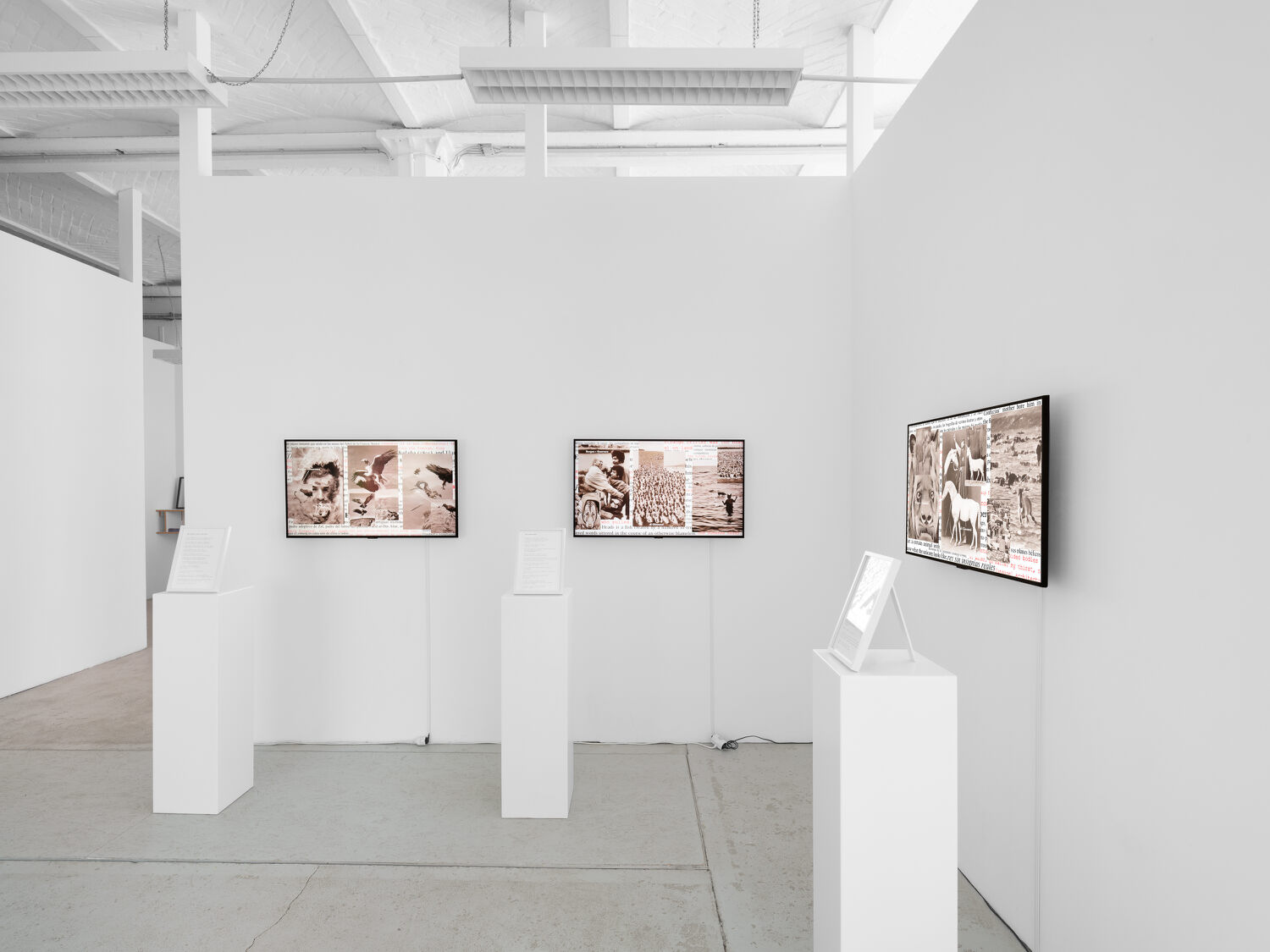
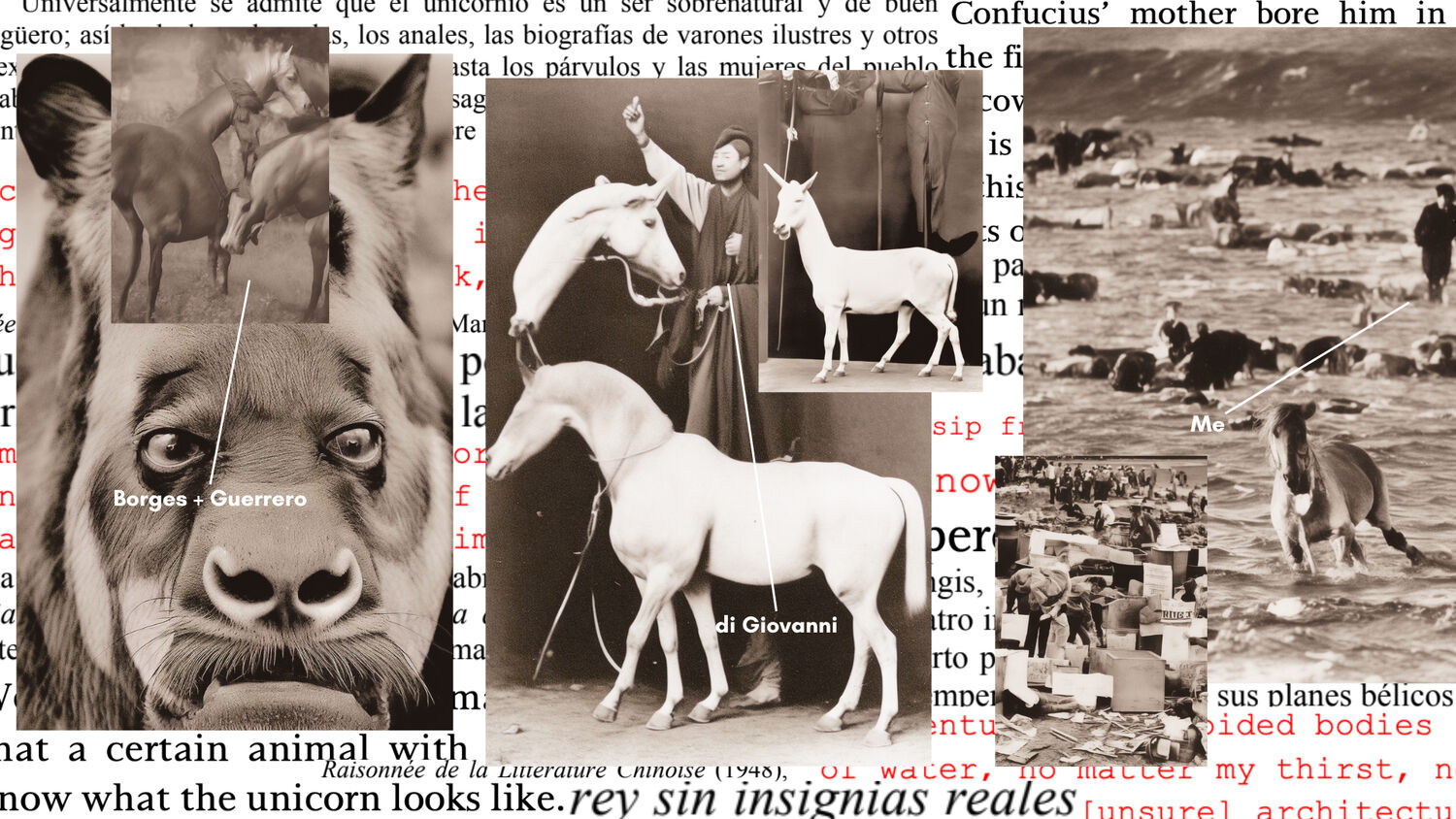

The Chinese Unicorn, 2024 – Poem
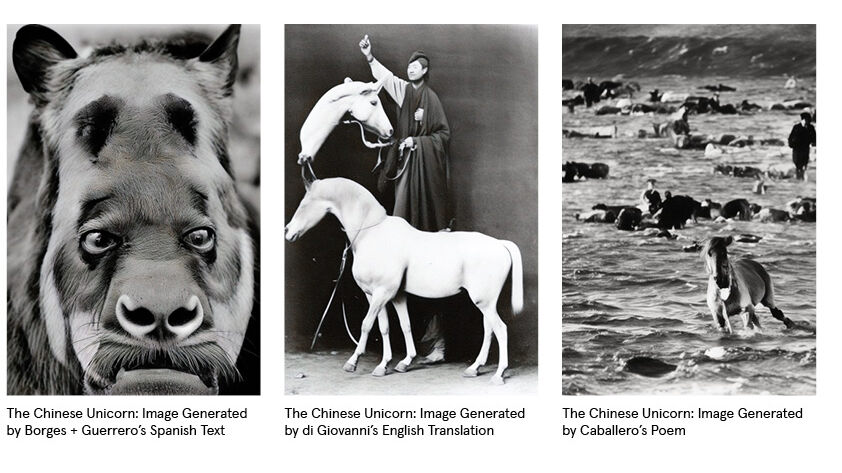
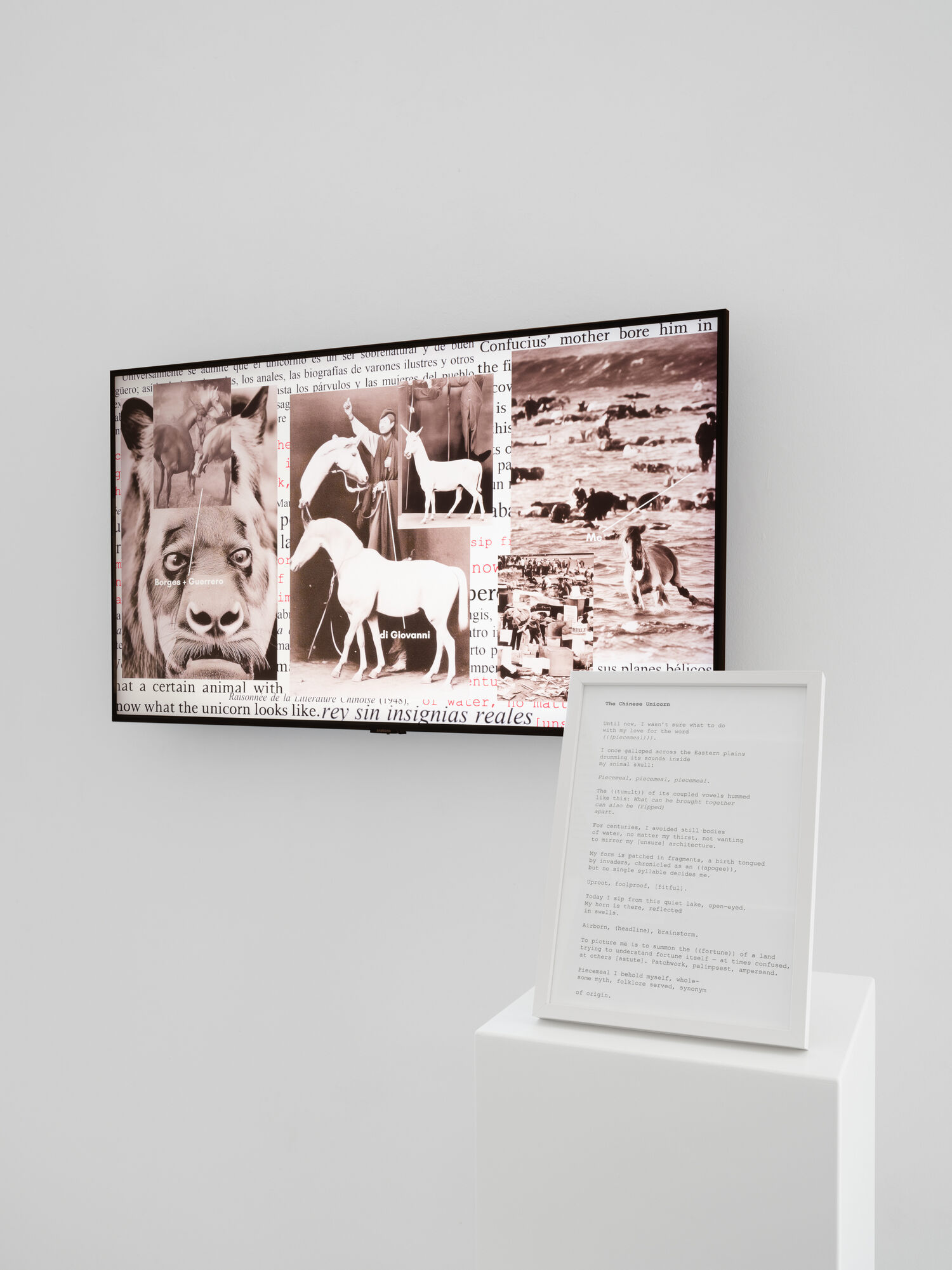
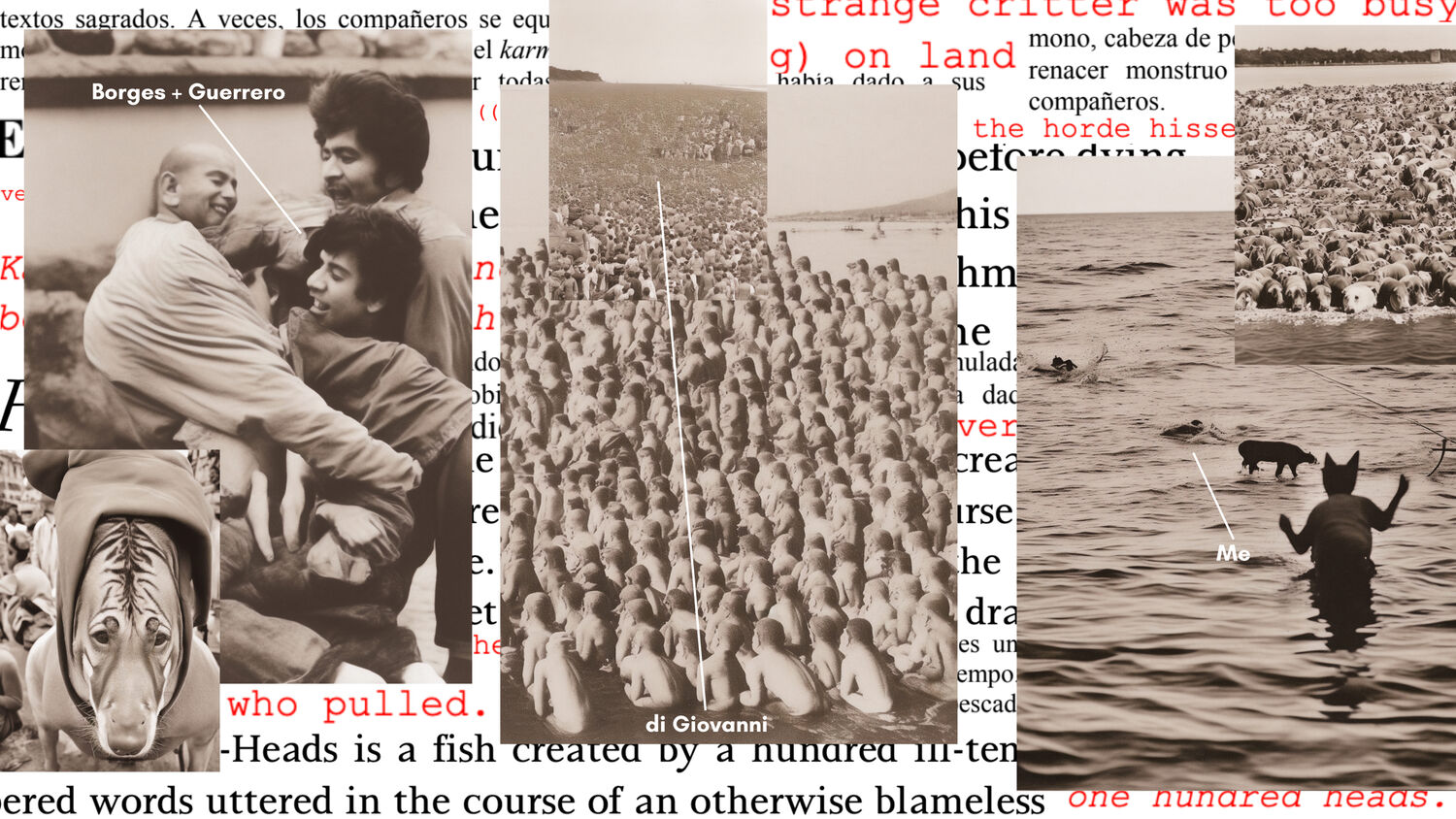
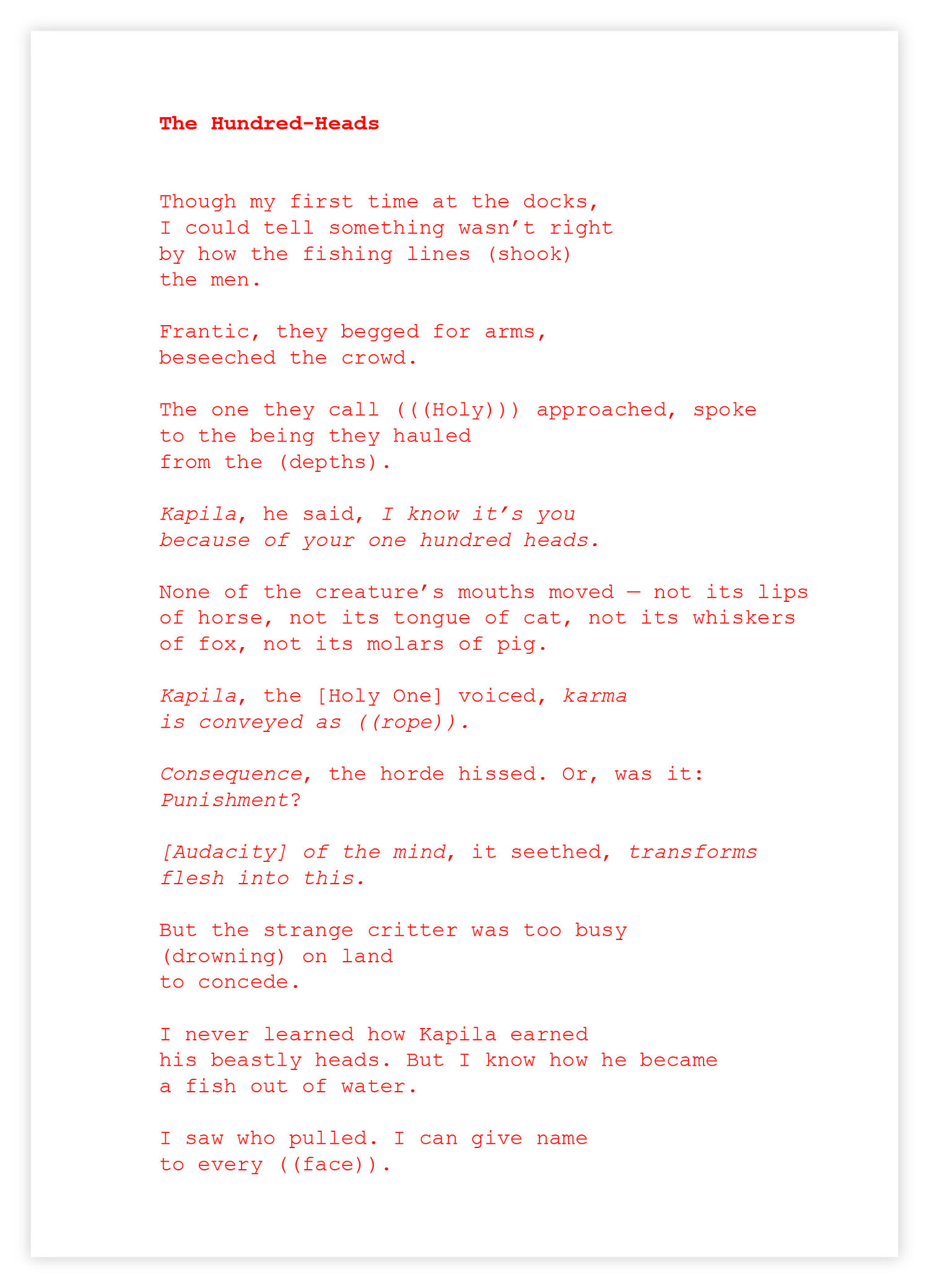
The Hundred-Heads, 2024 – Poem
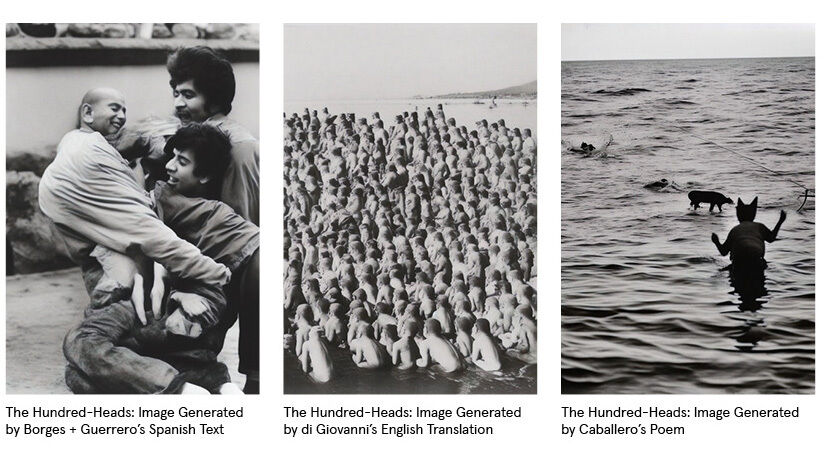
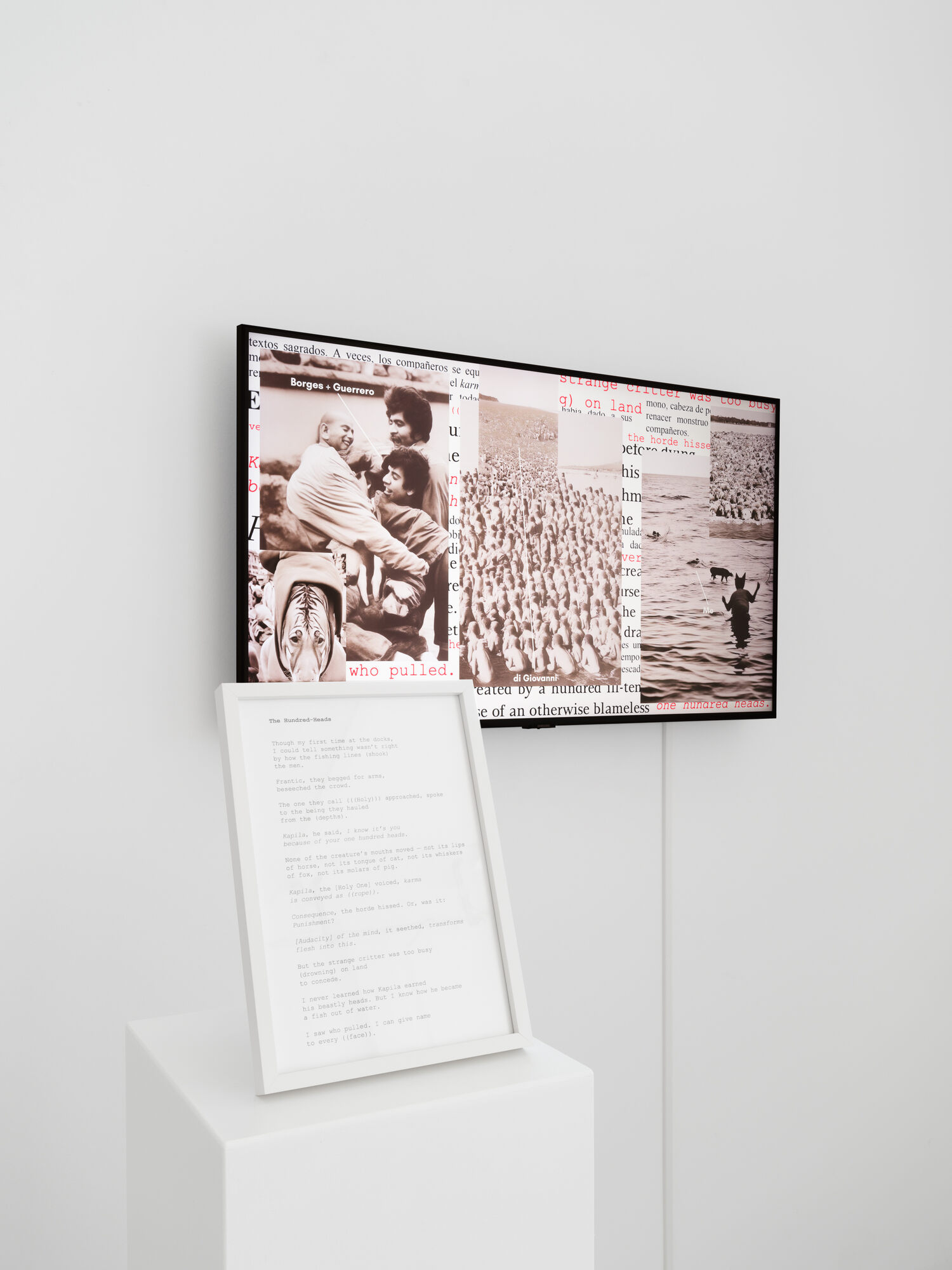
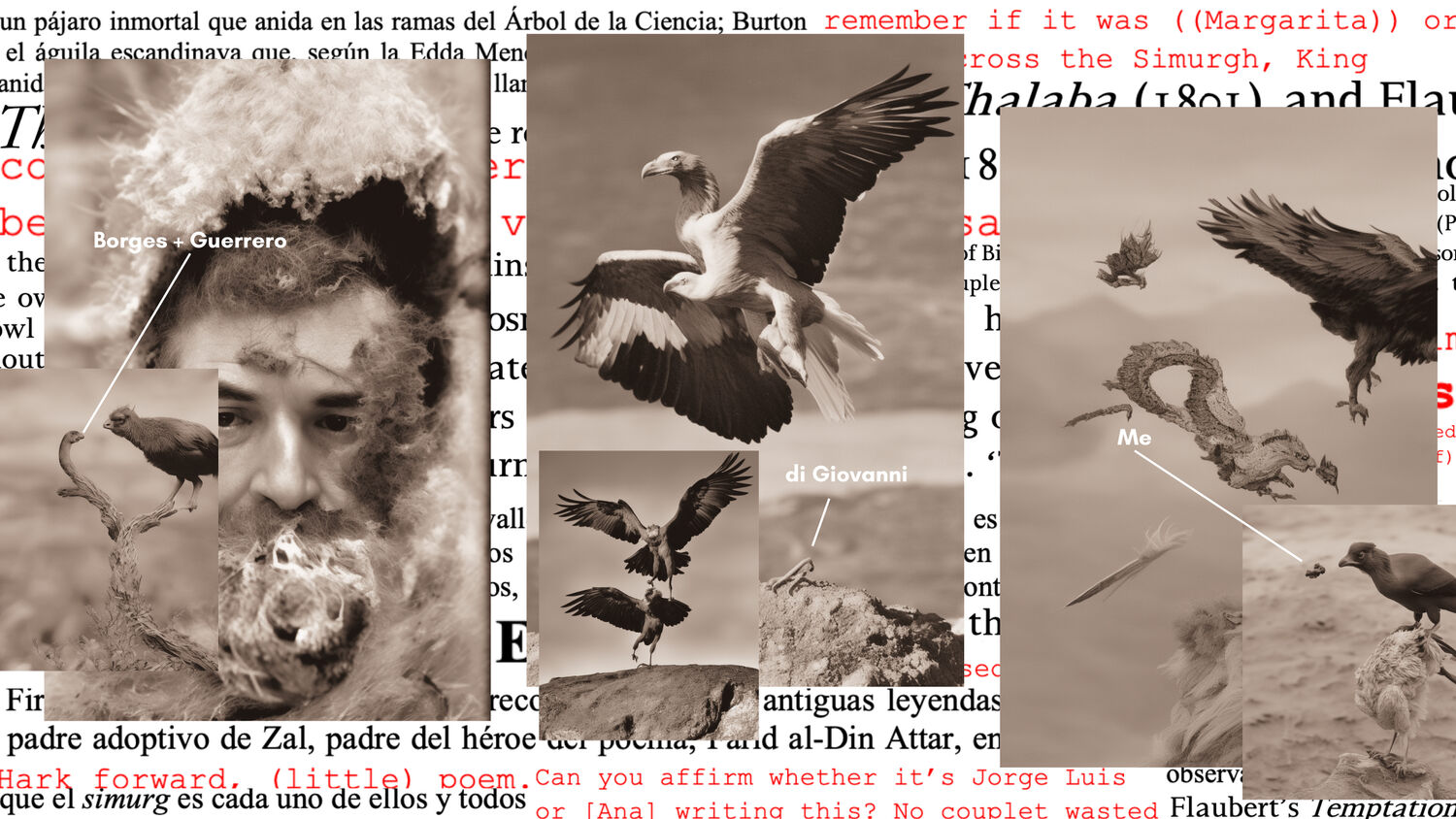
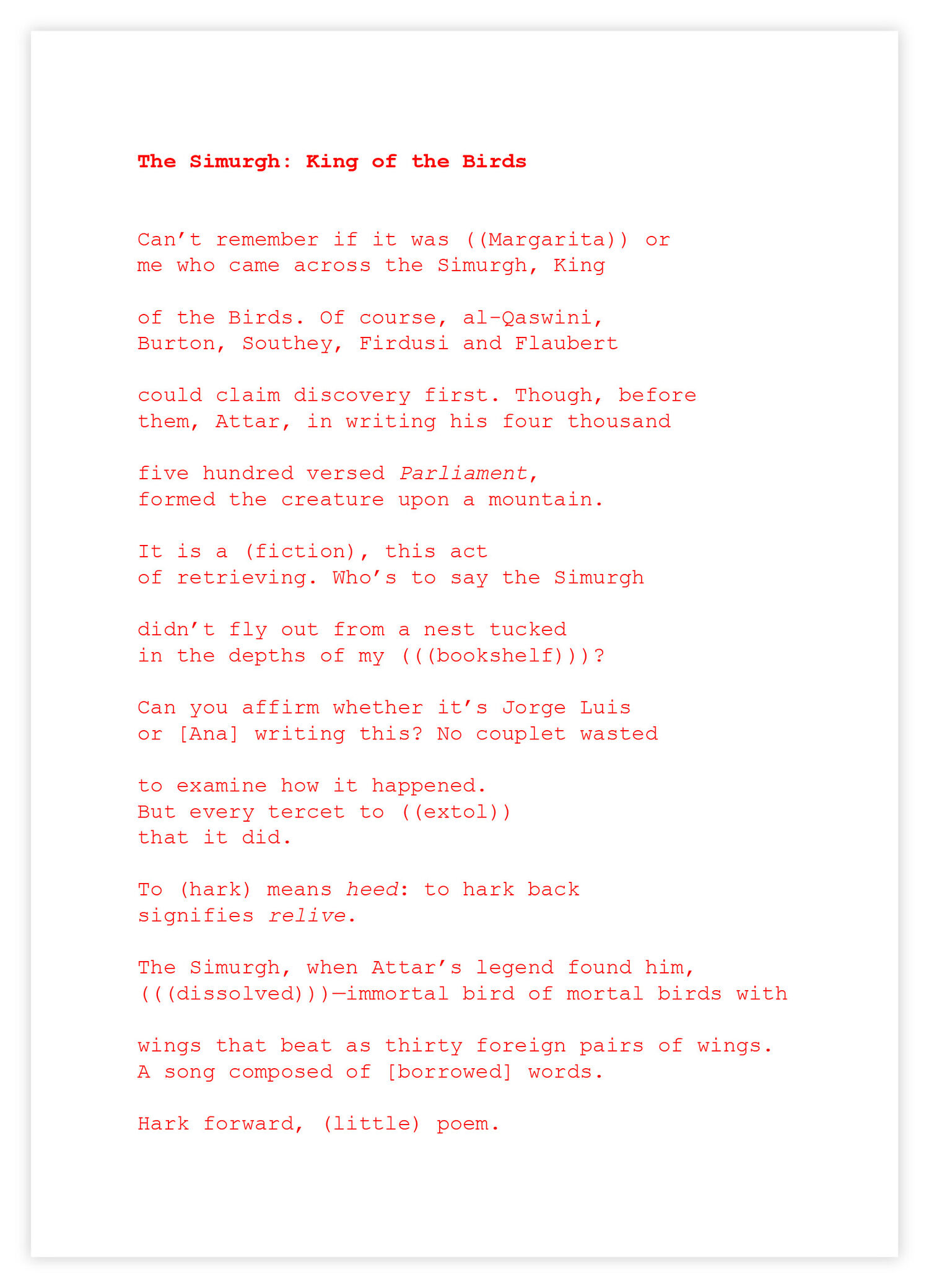
The Simurgh: King of the Birds, 2024 – Poem
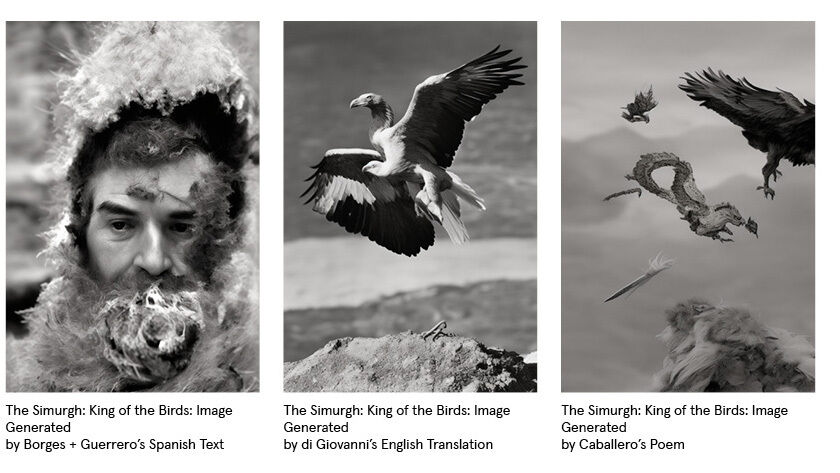
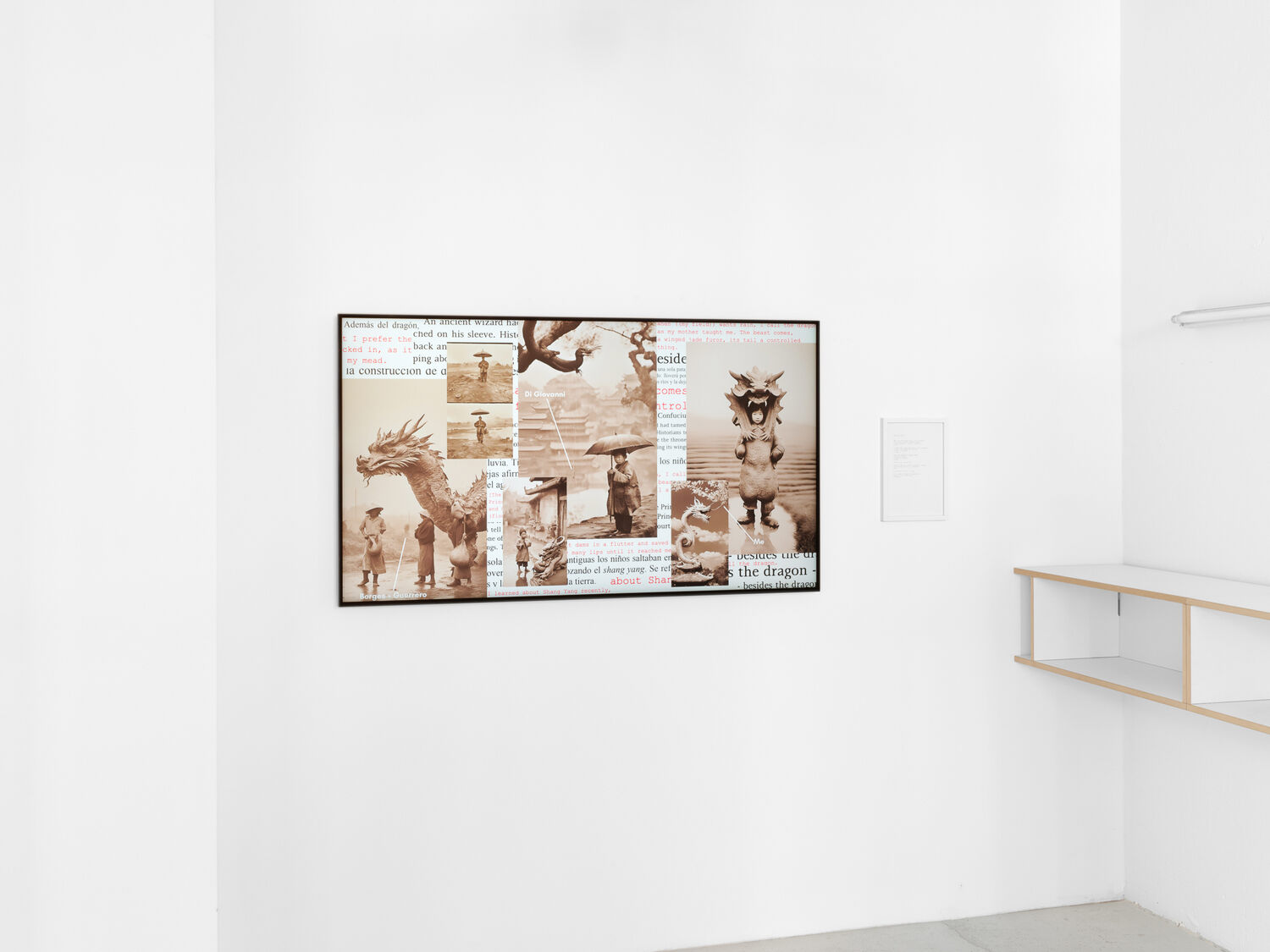
The Tension Between Translation and Interpretation in Ana Maria Caballero’s “Being Borges”
By Virginia Valenzuela
What happens to an artwork once the artist whispers its existence into the world? The artist’s intentions, though primal to the work, disappear, and it is but the viewer’s reaction that defines its meaning. The same thing can be said of any thoughts we are brave enough to translate into the spoken or written word. The listener, or reader, decodes our meaning. The original is at the mercy of the interpreter, just as the interpreter is at the mercy of the skill and precision used to create the original.
It was Jorge Luis Borges, an incredible literary mind, and himself an accomplished translator of particularly difficult works, who said that “The dictionary is based on the hypothesis–obviously an unproven one–that languages are made up of equivalent synonyms.” If all acts of communication come down to the challenge of translating unequal signals, then how are we to endeavor to translate thoughts, stories, and images from one language into another?
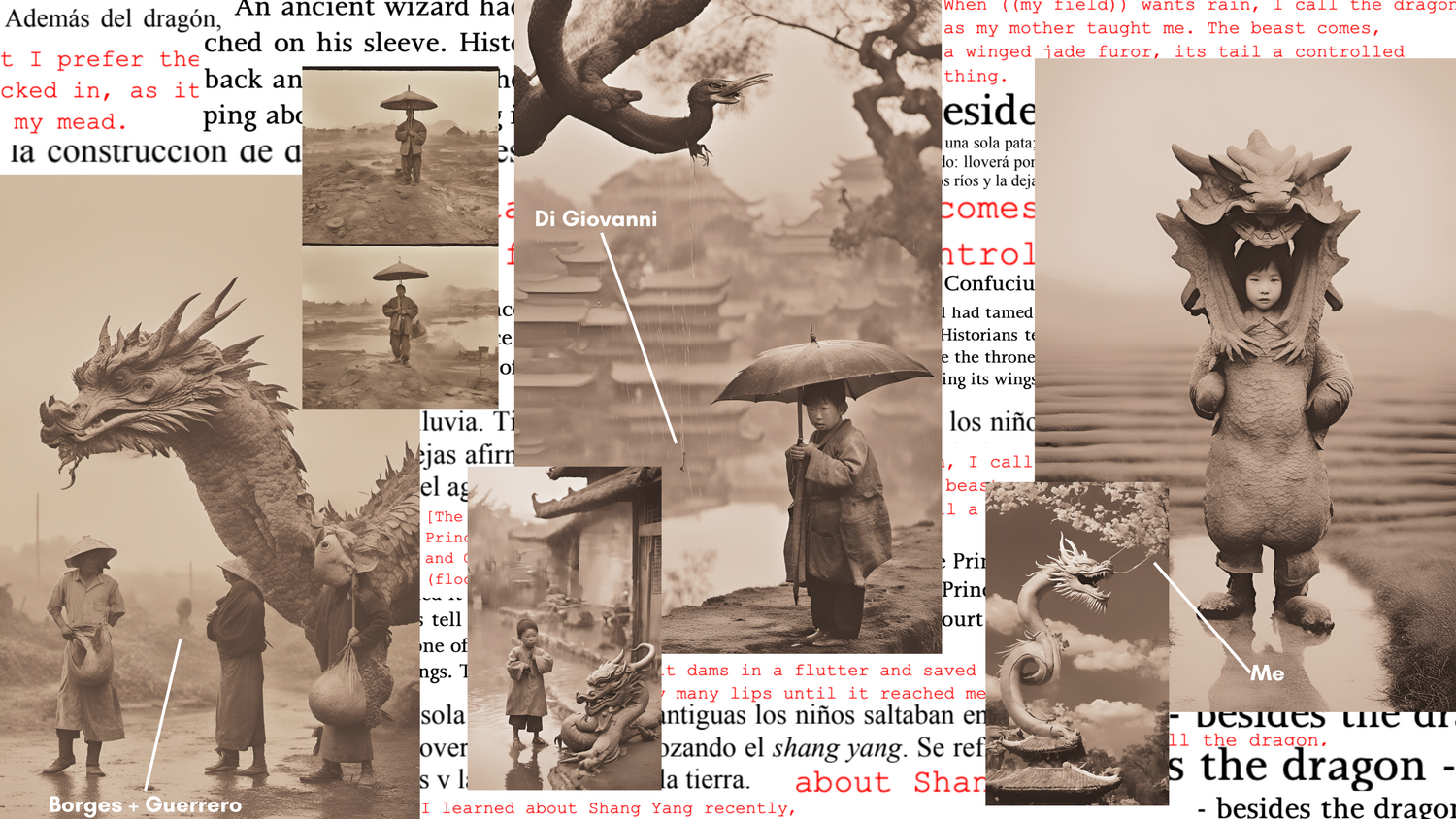
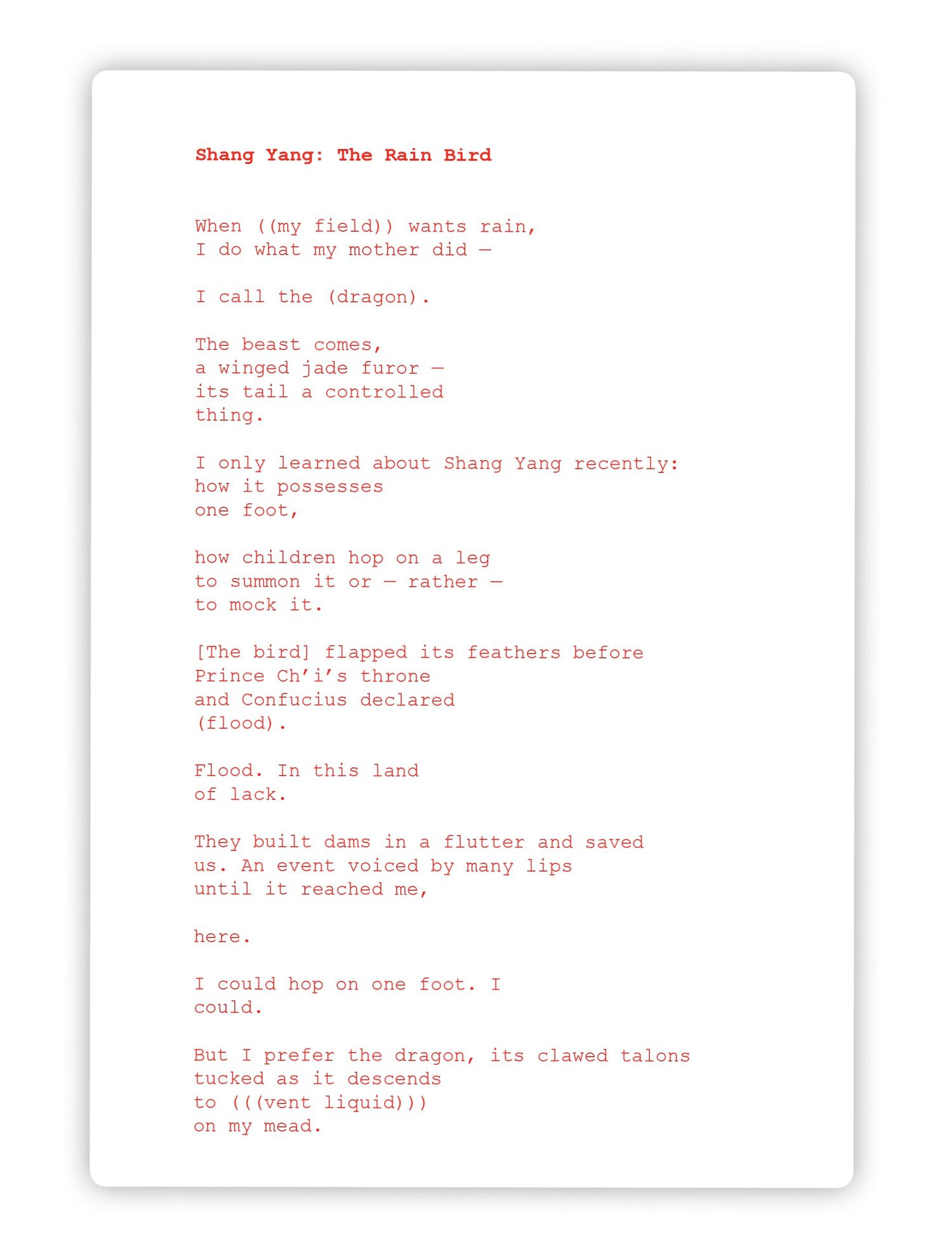
Shang Yang: The Rain Bird, 2023 – Poem
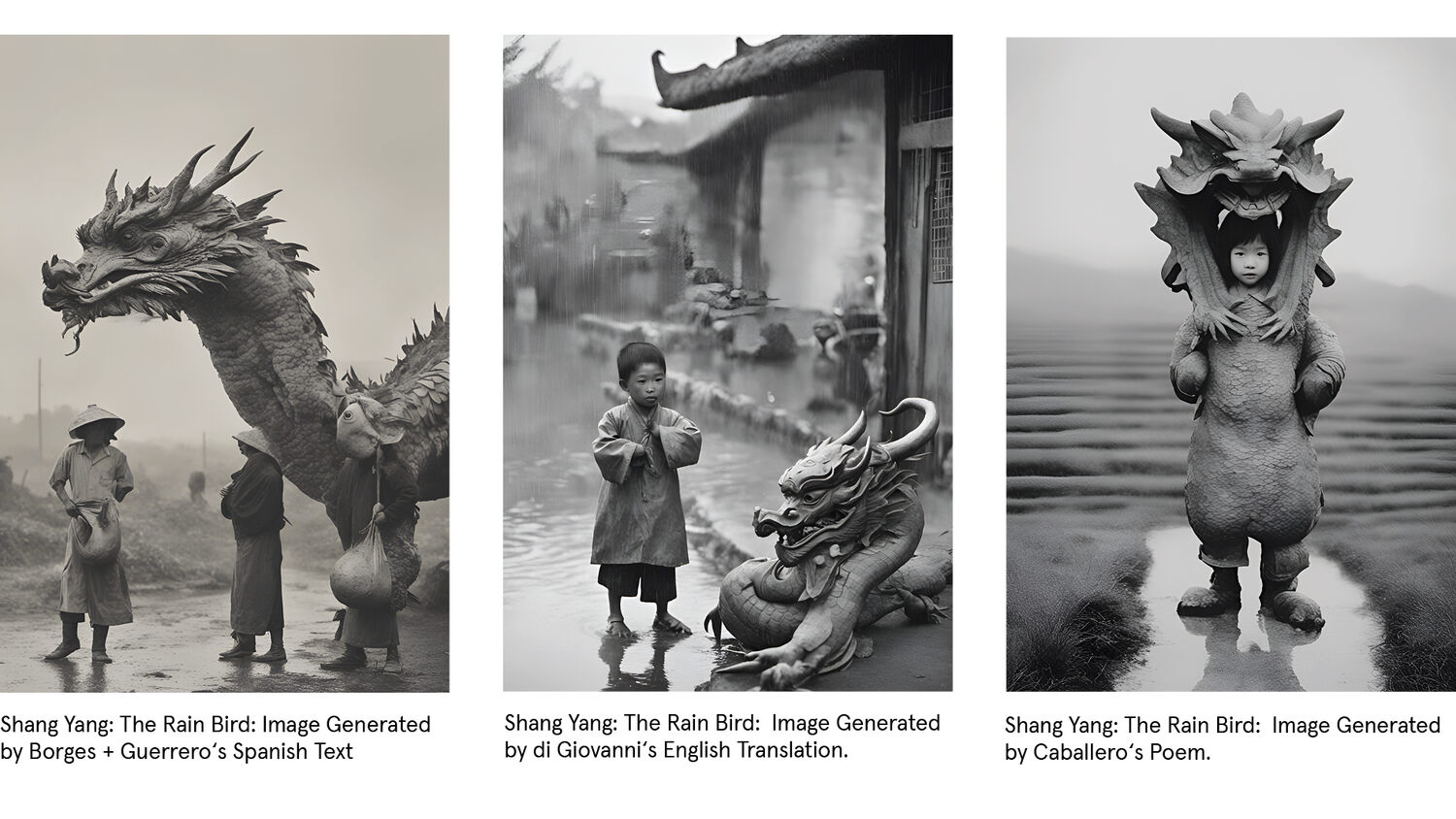
Translation is, after all, a form of rewriting, an attempt to capture the meaning, music, and intention of the original. Even for Borges, who collaborated on the first English translation of his “Book of Imaginary Beings, ” there was an impossibility of being truly faithful to the text. Language affects the way we convey meaning, the way we word things, and indeed, the way we see the world.
Ana Maria Caballero’s series “Being Borges” is rooted at the crux of signifier and signified, of language and interpretation, of precision and ambiguity. Using artificial intelligence to translate the original text, the original translation, and her own original interpretation into images, Caballero exacerbates the differences between three different voices attempting to describe the exact same thing. The process of using AI, a machine that has been trained on human data–and yet, is not human, and thus not able to cover up its biases–reveals simultaneously, the importance of word choice, and the futility of word choice.
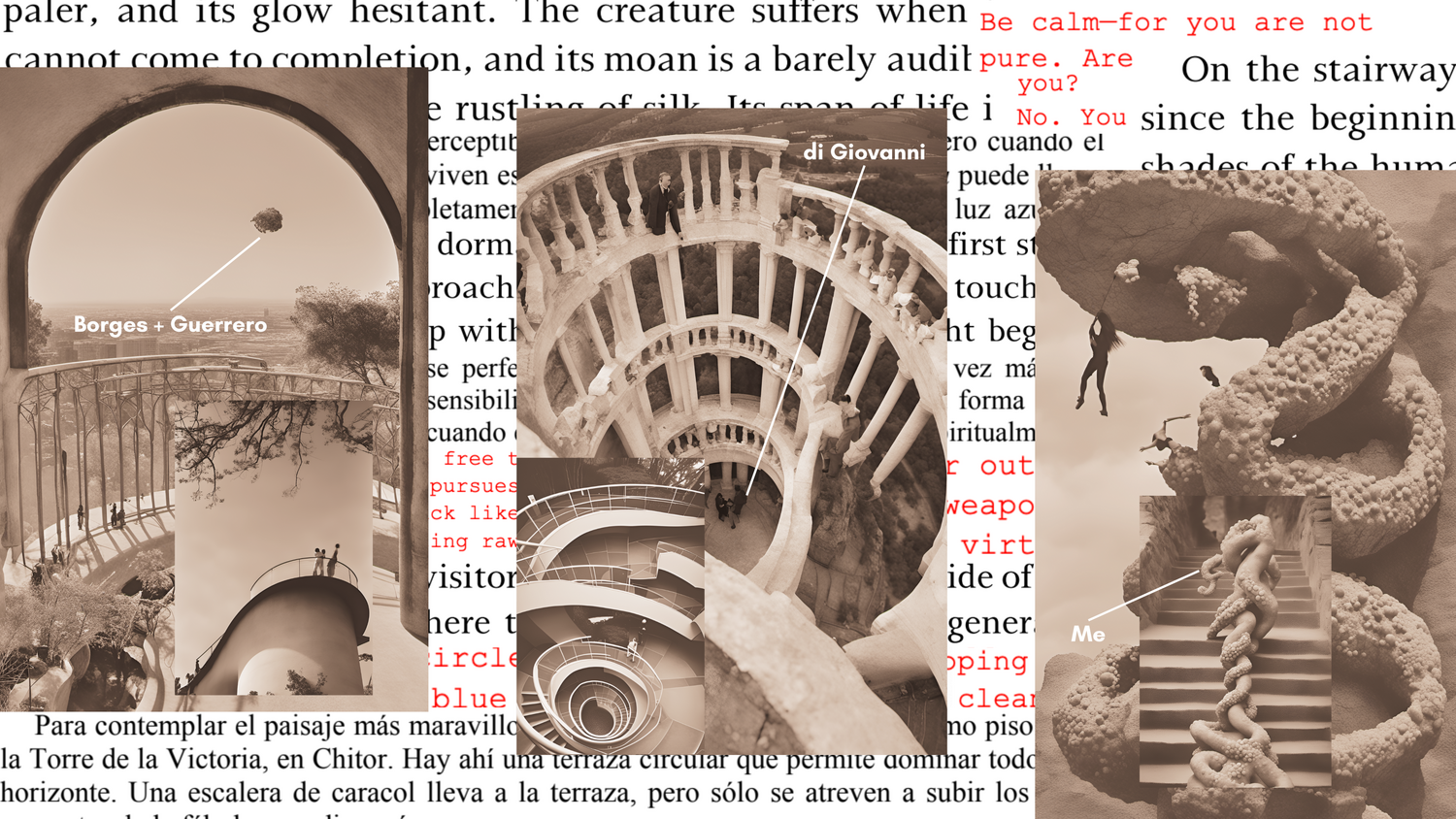
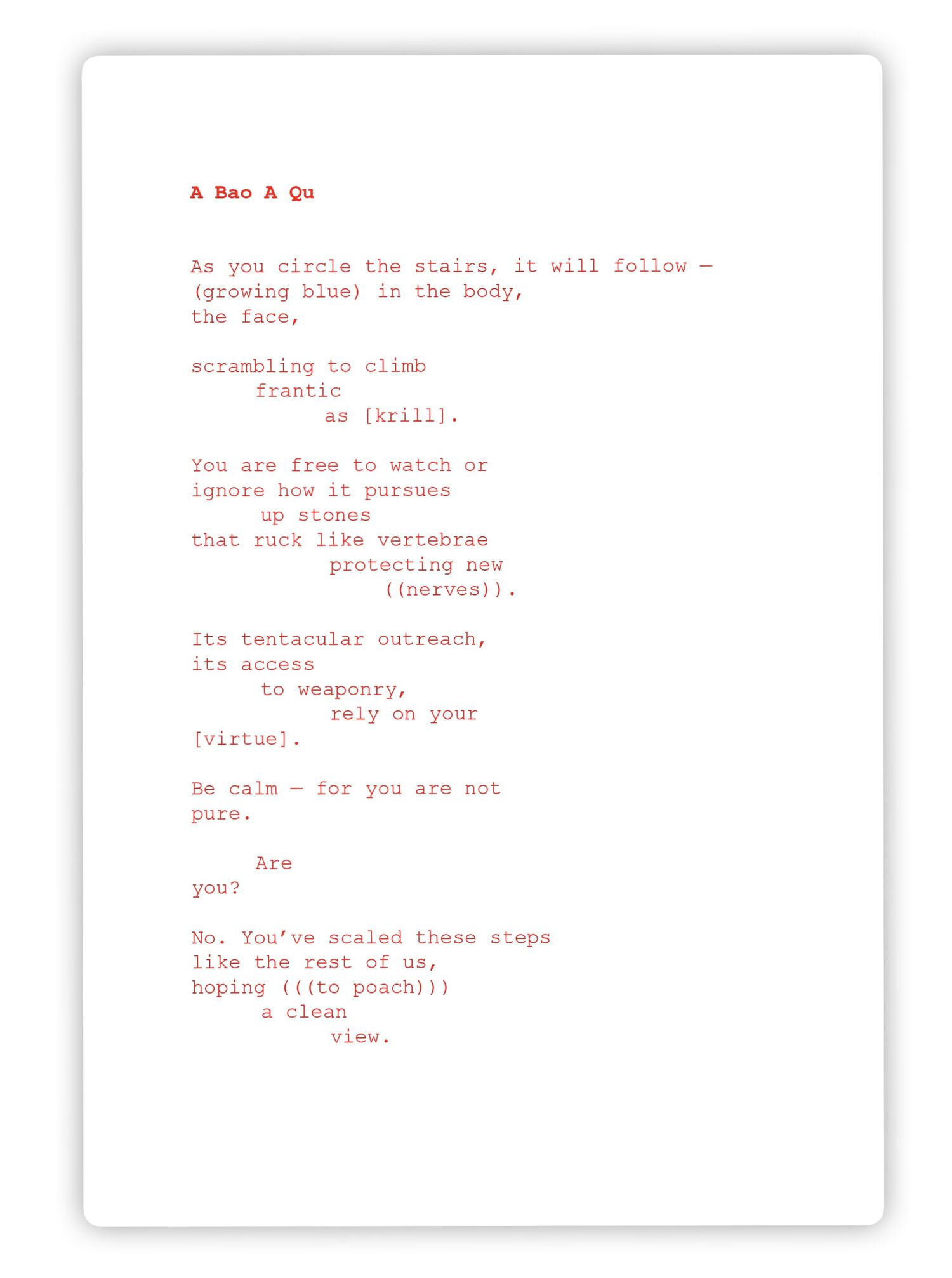
A Bao A Qu, 2023 – a poem
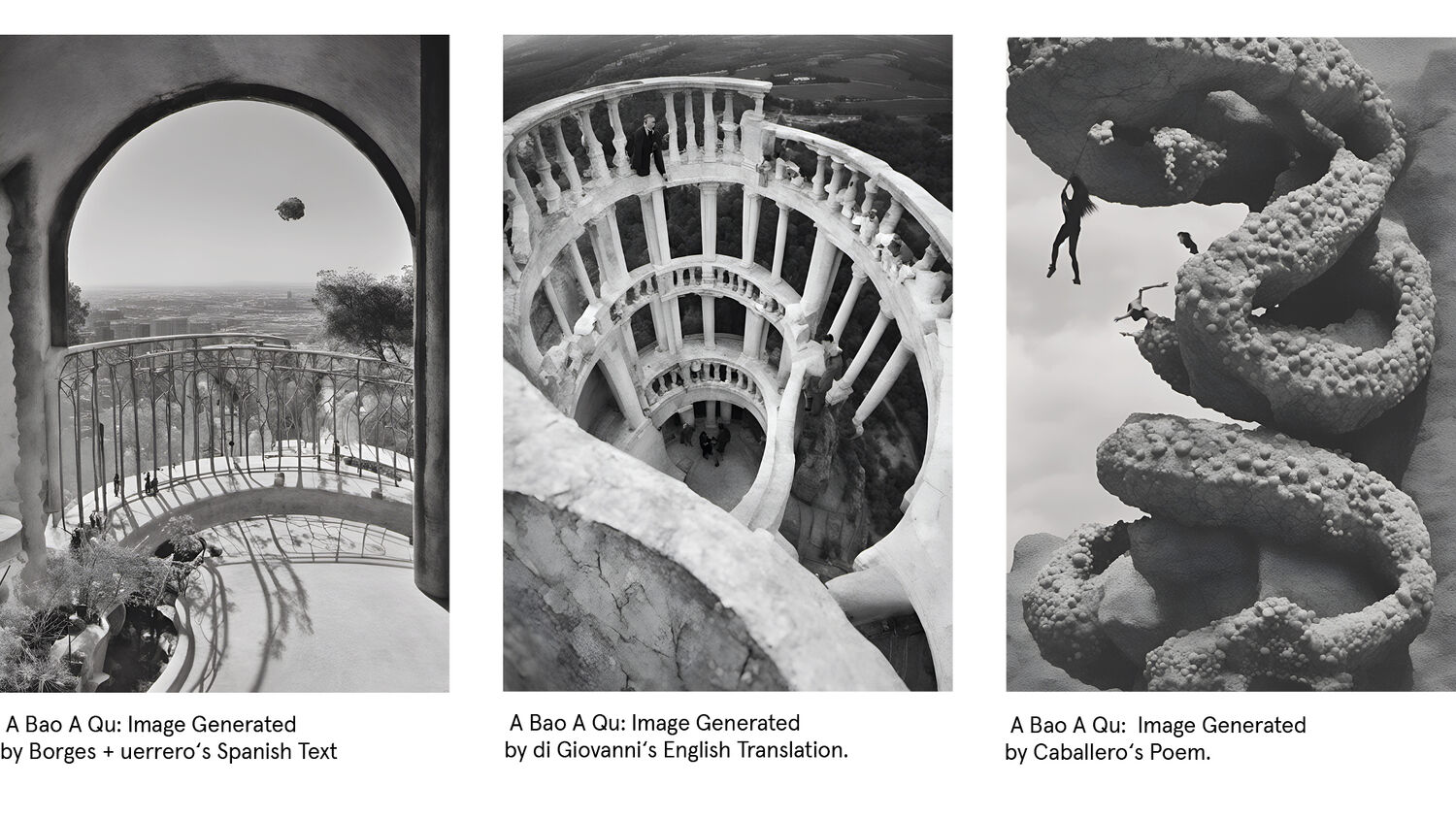
Each artwork in “Being Borges” weaves together the original Spanish, the English translation, and the poet’s own interpretations together in a textual tapestry that is constantly interrupted by the AI-generated images these words conjure up. Like Sophie Calle’s Suite Vénitienne, the artworks attempt to approach their subject, but never get close enough to put their finger on it. The three voices, along with the images of various sizes inspired by each, create imperfect triptychs full of hints, but bereft of clarity.
Caballero’s experiment in translation forces the viewer to consider the inadequacy of communicating across languages, cultures, and spans of time. It also, at base, questions the necessity of precision in such an endeavor. After all, is it the artist’s ability to convey themselves that draws us to their work, or rather, the space they leave for our own interpretation?
You can download the whole article „The Tension Between Translation and Interpretation in Ana Maria Caballero’s 'Being Borges' “ by Virginia Valenzuela here.
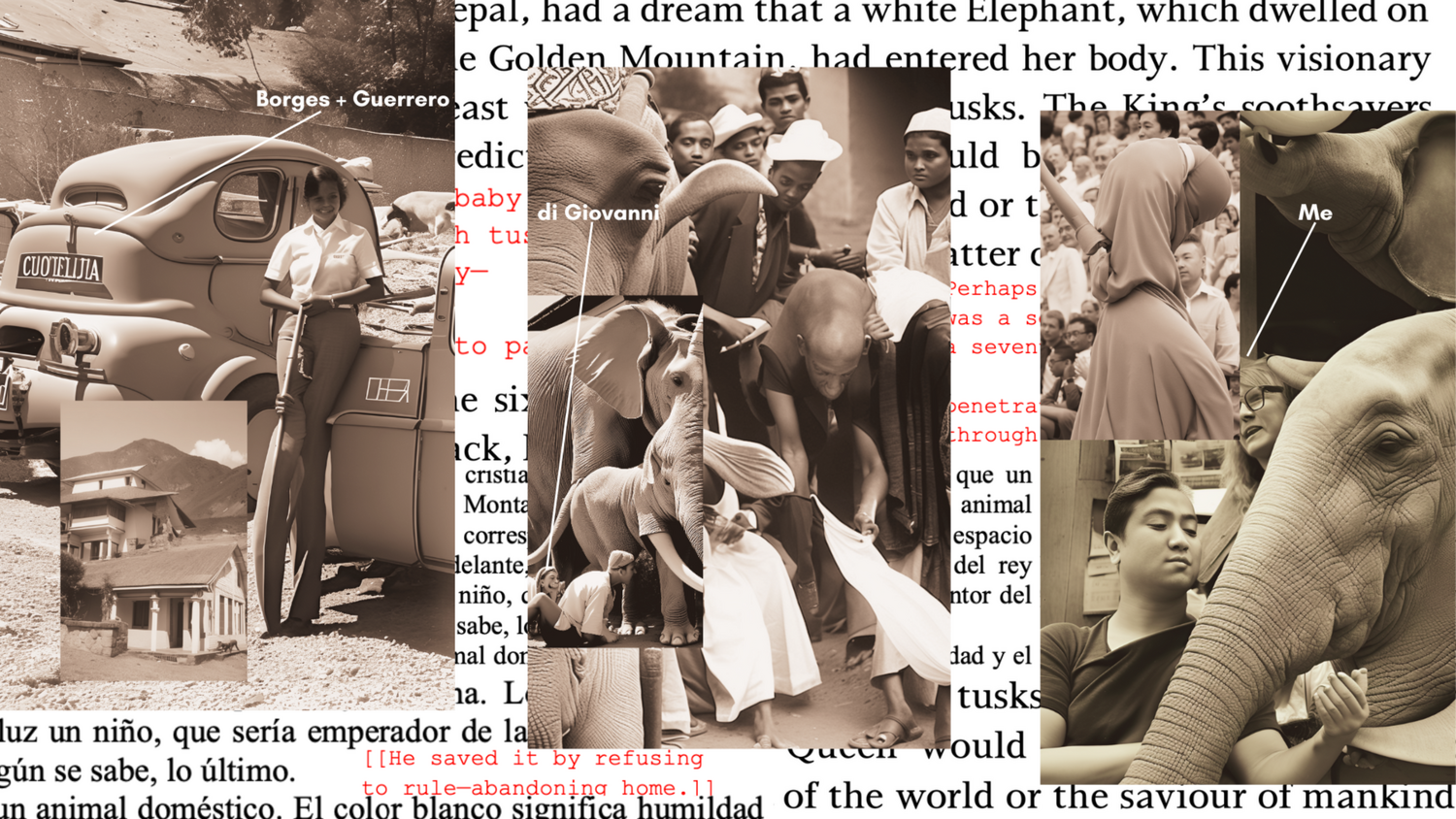

The Elephant that Foretold the Birth of the Buddha, 2023 – a poem
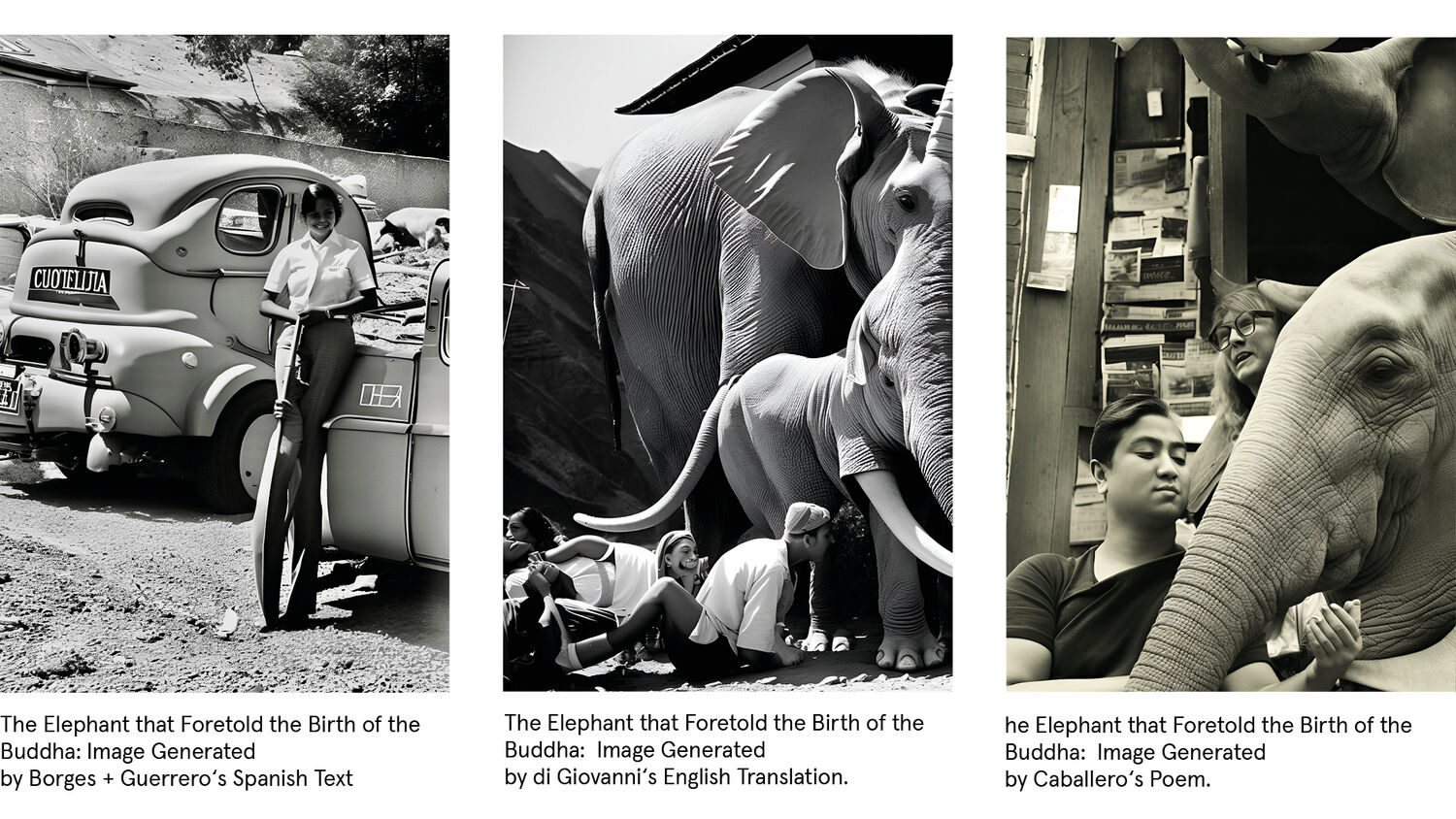
Being Borges is an ongoing series of 12 total Beings, inspired by “The Book of Imaginary Beings”
The first 3 Beings release via 24hr auction on October 25th at 6 pm CET on Verse
Each Being is offered as a 1/1 collector’s set, with a starting price of $400.
Each set includes 5 unique digital artworks:
– a new poem written by Ana Maria Caballero
– 3 different AI-generated photographs
– a collage that triangulates the images + underlying source texts
The signed, printed 1/1 poems are available to each collector for $200, worldwide shipping included. Additional photographs can be printed and shipped for $80 each.
Being Borges is a transdisciplinary series by Ana María Caballero, presented in partnership with Verse and Office Impart. It proposes a new form of literary translation, begging the question: What’s at stake when language becomes literal via the visual?
As a literary artist, Caballero’s work is rooted in the written word.
For BEING BORGES she selected twelve creatures from Jorge Luis Borges and Margarita Guerrero’s iconic work of literature „The Book of Imaginary Beings“—a vast, soulful compendium of humanity’s imagined creatures. She then selected the equivalent texts from this book’s 1970 English translation by Norman Thomas di Giovanni, which Borges himself supervised.
Caballero used these raw texts—intervening in no way whatsoever other than via parametrization—to generate AI photographs. In doing so, she reveals how this technology visually interprets Spanish versus English, unmasking biases ingrained in large data sets and underscoring the limits of literal translation.
The visual variances between the resulting images evidence the impossibility of “reading” Spanish and English in the same way, reminding us that languages are different sign systems with nuances and meanings that exist beyond their constructed signifiers.
The artist also wrote a poem inspired by the original Spanish text, incorporating AI-generative semantics to delve into the poetics of prompts and weaving in intertextuality. This poem underwent the same text-to-AI image translation, confronting the poetic with the prosaic.
The multifold layers of this project are plotted in a digital collage where Caballero triangulated all inputs and outputs. With language framing so much of human thought process, BEING BORGES invites viewers to experience multilingual and multimodal readership as a transdisciplinary work of art.
To be Borges, is to play hide and seek with imagination and to know it will never be pinned down.
about Ana María Caballero
Ana María Caballero is a first-generation Colombian-American poet and artist. Her work explores how biology delimits societal and cultural rites, ripping the veil off romanticized motherhood and questioning notions that package sacrifice as a virtue. She is the recipient of the Beverly International Prize, Colombia’s José Manuel Arango National Poetry Prize, the Steel Toe Books Poetry Prize, a Future Arts Writers Award, a Sevens Foundation Grant and has been a finalist for eight additional literary prizes.
Her Pushcart Prize and Best of the Net-nominated work has been widely published and exhibited internationally, recently at bitforms in New York, Gazelli Art House and UNIT in London, Nighttimestory and Epoch Gallery in Los Angeles and L’Avant Galerie Vossen in Paris. She became the first artist to sell a digital poem at live auction in Spain, and her verse is held in both public and private collections worldwide.
Recognized as a Web3 poetry pioneer, her work has been covered by major media outlets, such as ARTnews, LAWeekly, Forbes, Entrepreneur, Elle UK and ABC España. Her digital poems have been released by both TimePieces and Playboy. She’s been a speaker at events organized by the University of the Arts London, Sovereign Nature Institute, Untitled Art Fair, JustMAD, AWP, and the International Women of Blockchain Conference.
She’s the author of five books and has a sixth volume forthcoming in 2024. As co-founder and curator at digital poetry gallery theVERSEverse, she’s transforming the way poetry is experienced, exhibited and transacted.
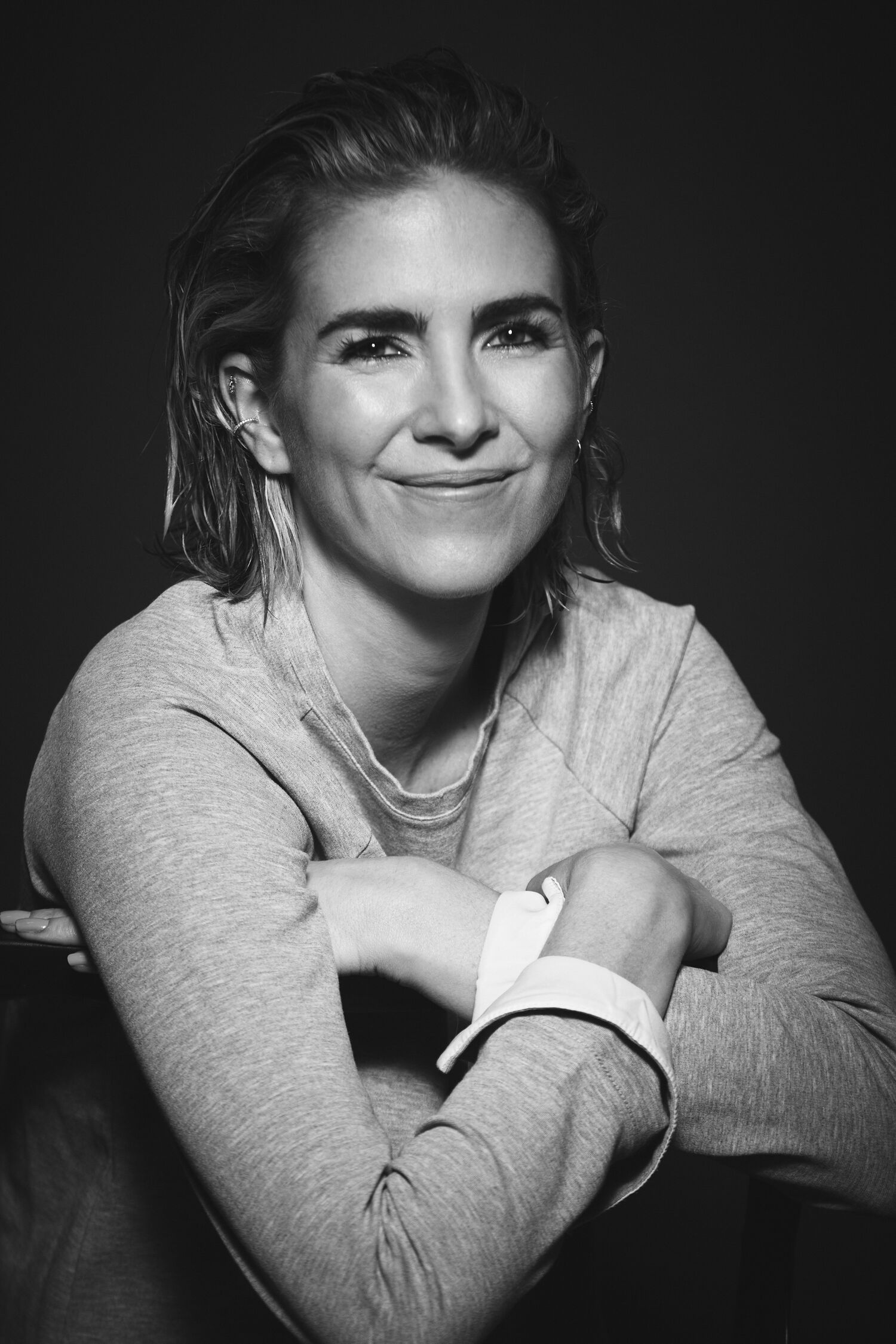
additional works
Things I Am Saving to Write / Things We Are Saving to Write
Caballero was invited to create two artworks for bitforms’ Code Chronicles exhibition, curated by Aleksandra Artamonovskaj in March 2023.
The first, Things I Am Saving to Write, is a poem inspired by Ernest Hemingway’s story “The Snows of Kilimanjaro, ” in which the main character is unexpectedly and irrevocably faced with his imminent mortality. This poem, originally published in prestigious literary journal Salamander, was visualized for the exhibition via artificial intelligence.
During the length of the exhibition, Caballero invited visitors to the exhibition to contribute things they were saving to write and to input these into a Stable Diffusion terminal set up at the gallery. Over 100 visitors left text and image responses, which Caballero then condensed into the collaborative poem Things We Are Saving to Write, which effectively became a chronicle of Code Chronicles.
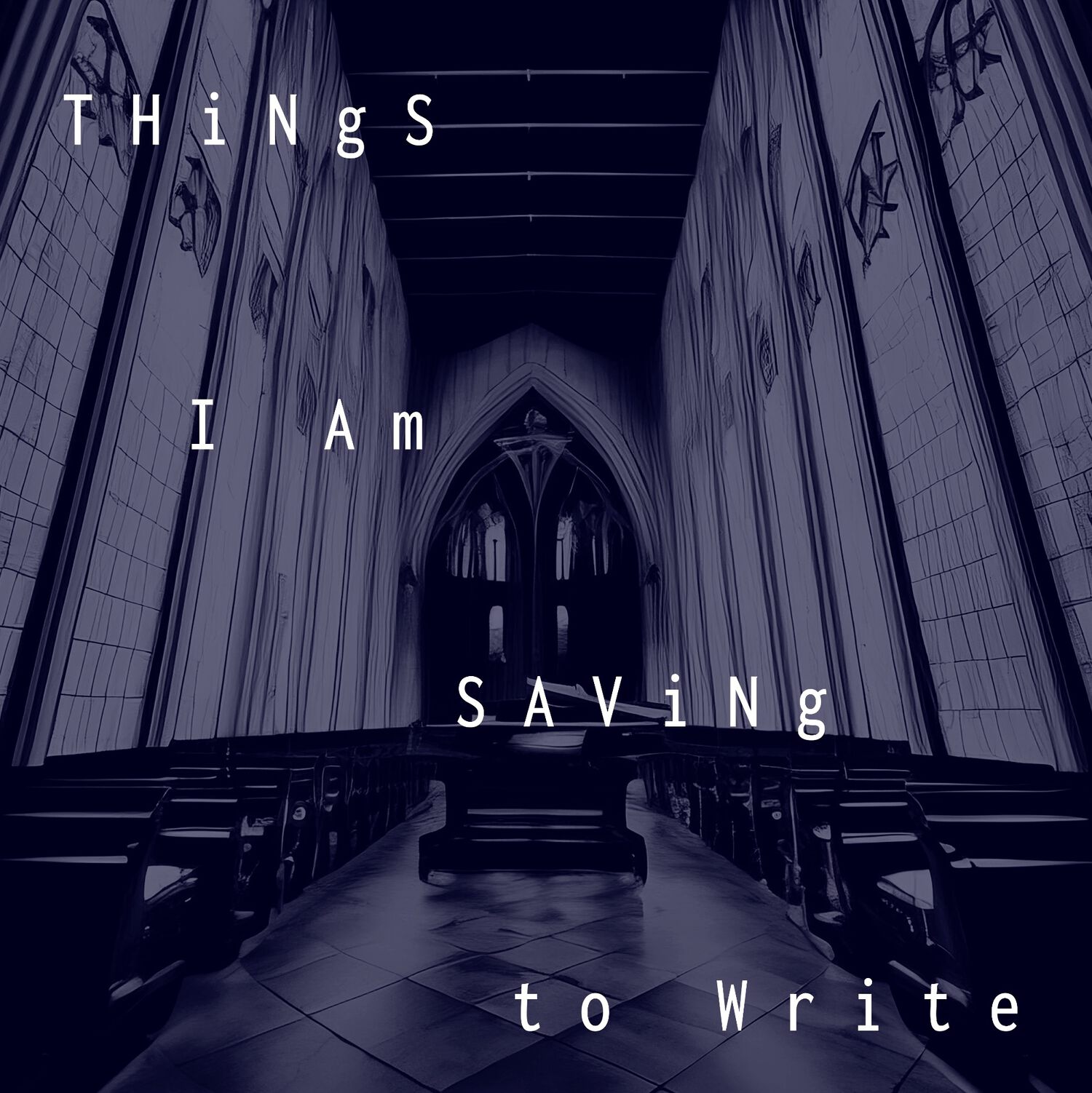
Things I Am Saving to Write is inspired by Ernest Hemingway’s story “The Snows of Kilimanjaro, ” in which the main character is unexpectedly and irrevocably faced with his imminent mortality.
As a poet, Caballero uses words to generate images within people’s minds. By using the imagery of her verse as the foundation of AI prompting and then crafting a visual narrative from these images, Caballero brings our collective unconscious into direct dialogue with language’s unspoken connotations, calling forth the entanglements of meaning-making.
Prompting is deeply tied to poetry–writing workshops offer students prompts to inspire poems–but, here, a poem generates visual prompts. In her image curation, Caballero evinces the wide array of emotions that stem from words as well as the tensions between the private and the public, between the mythical and the historic, between the figurative and the verbatim that hide within the layers of verse.
Caballero’s exploration of the poetics of prompts distills the materiality of language, inviting us to contemplate our visceral reactions to words and the vastness of our imagination.
Things We Are Saving to Write is a collaborative poem written by Ana María Caballero using contributions received from visitors to bitforms gallery during its Code Chronicles exhibition, curated by Aleksandra Artamonovskaja.
Caballero created a poem for Code Chronicles called Things I Am Saving to Write, inspired by Ernest Hemingway’s story “The Snows of Kilimanjaro, ” in which the main character is unexpectedly and irrevocably faced with his imminent mortality.
During the length of the exhibition, visitors were invited to submit things they were saving to write and to visualize them via a Stable Diffusion text-to-image generation station.
Caballero culled from over 100 visitor submissions to compose a new poem using visitors’ visualizations as well as interpreting their words to create new ones.

WAYS TO MISSPELL OBSIDIAN
In September 2022, Ana María Caballero was Gazelli Art House’s artist in residence. As part of her residency, she created WAYS TO MISSPELL OBSIDIAN, a collection of spoken-word poems that investigates and celebrates the storytelling potential of long-form poetry.
Following the passing of a very close friend, Caballero composed JUAN, a eulogy-in-verse. This text serves as both precursor and companion to “Ways to Misspell Obsidian, ” a lyric essay written years later in which details of Juan’s passing are braided into the story of the intoxication of Caballero’s young son with nail polish remover.
Caballero culled from the pages of her essay to create two standalone poems, FATHOMLESS and ONCE. Combined with JUAN, these works form a triptych of shared signification, recursion, imagery, and vocabulary in which rhyme, unexpected line breaks, and spacing are used to sketch the shadows of emotion.
Written in Caballero’s signature, straightforward style, the texts read like open heart surgery. The reader is welcome into the folds of each word as an active participant, searching for meaning via memory–but gently. Traumatic and commonplace events are woven together to show how bright bursts of significance hide in every moment of our lives.
Caballero’s poems don’t deliver tidy answers, and they are unapologetic about it. Instead, they invite the reader to sit beside meaning and discover how such proximity can suffice.
“Ways to Misspell Obsidian, ” was a finalist for the Emerging Writer’s Contest hosted by Ploughshares, one of the most prestigious literary journals in the US. JUAN was written as a gift for Juan’s sister and is being published, as an artwork, by GAZELL.iO.
thin lace
In May 2023, Ana María Caballero was invited to be part of Expanded Art’s exhibition “A Beating Heart: Female Pioneers of Digital Art.” She contributed her spoken-word poem thin lace, about the evolution of intimacy in long-term relationships. Written in Caballero's signature, multi-valent style, it paints an honest portrait of the collision of committed love, exhaustion and desire.
This poem is from Caballero’s forthcoming book Mammal, the winner of the prestigious 2022 Steel Toe Books Poetry Prize, a semi-finalist for both the Vassar Miller Prize and the Birdy Poetry Prize and designated as a Manuscript of Exceptional Merit by Tupelo Press. It will be published by Steel Toe Books in 2024.
thin lace was also exhibited during the Poème OBJKT exhibition at L’Avant Galerie Vossen in Paris in October 2022. This exhibition, along with its 2023 sister show Poème SBJKT, was co-curated by theVERSEverse and L’Avant Galerie Vossen and was long-listed for the 2023 Lumen Prize in the Crypto Art category.
